The Edible Women
On consuming the female body.
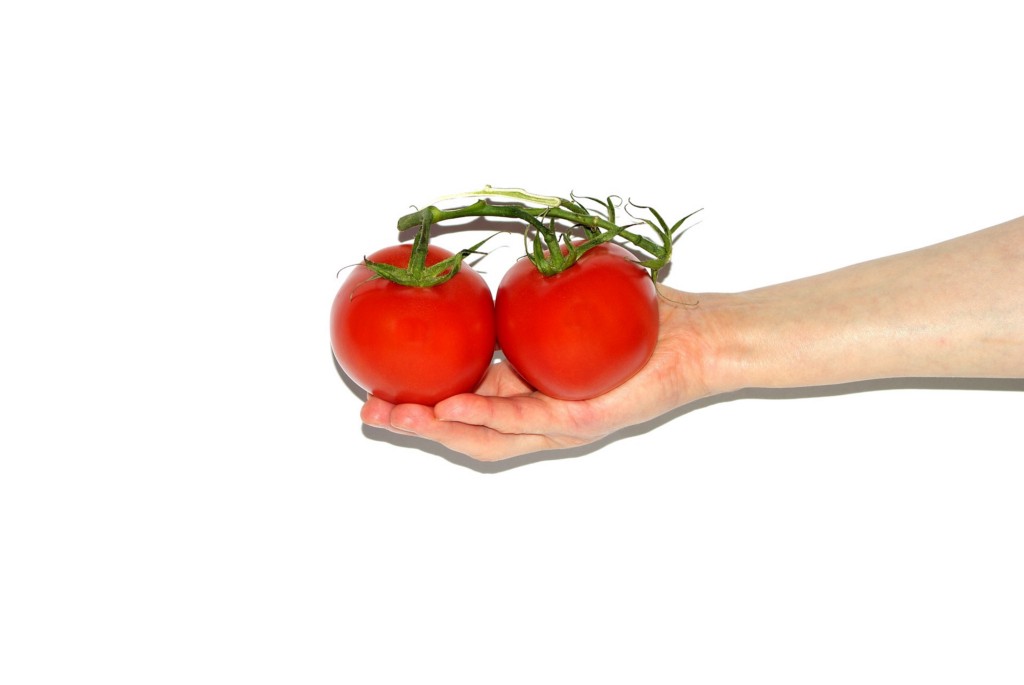
When I was ten, I performed as a carrot during a brief stint at the National Ballet’s contemporary dance camp. The performance involved dancers miming the following scenario: at a fine dining restaurant, servers bring trays of seafood, spaghetti, and vegetables to the impatient customers as they snap their fingers, waiting for their food to dance for them. I danced the role of a carrot for two reasons: orange is my favorite color, and I was unable to perform as a meatball because I did not know how to do a somersault. I was young, it was weird.
In Katy Perry’s recent music video for the song “Bon Appétit” Perry first appears suction-packed into a bed-cum-meat packaging. The same metaphor was used by PETA in a 2010 live performance advertising campaign in New York City; as an explanation, they wrote:
The thought of chewing and swallowing the skin and muscle of a murder victim surely ruined some viewers’ appetites for flesh food. It’s the appropriate response to witnessing a gruesome display of the corpses of those who have been tormented and killed — you know, like in the butcher department of your supermarket.
Perry’s performance as a piece of meat isn’t so much a scathing commentary on the meat industry as it is a statement as Perry’s scattered attempt to achieve agency of her image.
Surrounded by knife-wielding chefs, Perry is dredged through flour, and massaged (I’m a five-star Michelin / A Kobe flown in / You want what I’m cooking, boy), presumably temderizing her flesh. Perry then revisits the popular trope from Hansel and Gretel of being cooked in a cauldron, though now the cauldron is a hot tub of soup (Eat with your hands, fine / I’m on the menu) and instead of planning her escape, Perry embraces her objectification, making eyes at the camera.
Turning someone into food is a sure-fire way to turn them into the “other”. The boundaries between the victim and cannibal are dissolved, each person shedding their sense of self. This blurring into one another is full of both fear and ecstasy, or in other words: eroticism. We can blame the popularity of the narrative of women being eaten, and its intended sexual undertones, on the romantic vampiric storyline that has grabbed people’s imaginations ever since it first debut in John Polidori’s 1819 book The Vampyre.
A person as meat is: an object, submissive, powerless, dead. Of course for many this equates to sexy. Our desire for food, sex, money, and power has resulted in conflation. The trinity of food/sex/power plays out again and again in pop culture, raising the question: is the female body being portrayed as food inherently objectifying? What if you’re presenting yourself as food? The line between agency and abjection is a thin one.
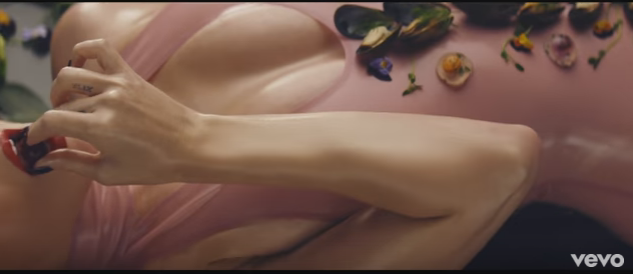

The penultimate scene finds Perry at a club as the centerpiece of a table, fancy dinner guests milling around her until a stripper pole is erected in the middle of her legs. Perry gets up and starts dancing as ropes bind the once-purveyors of her body, and a female guest gets bound with an apple in her mouth. The tables have turned. Now we are the ones being tied up and consumed by Perry herself. I can almost hear the mocking undertone: it doesn’t feel so good to be treated like an object, does it?
In the final scene, Perry looms in the foreground wielding a knife and fork, a cherry pie with hands and feet sticking out in front. The “Bon Appétit” video invites the viewer to see Perry as a piece of meat—daring us to find the act titillating—up until she pulls the rug out from beneath us.
When asked about the meaning of the video during an interview with Australia’s Kiss FM radio show, Perry said, “It’s like ‘oh you just think you have me all figured out’ and also we aren’t just pieces of meat. You just want to use me, dispose of me, the parts that you want — I’m sorry, I’m in control this time.” Perry is trying to one-up a culture that views celebrities as objects by exposing her awareness of people’s perspectives, attempting to take ownership of her own objectification, and then turning the tables.
But when the song’s lyrics are taken into to account the message Perry is supposedly putting across becomes confused and at odds with the other. Got me spread like a buffet. Well I’m open 24 / Wanna keep you satisfied / Customer’s always right. Perry goes on to explain that the main purpose of the song as providing escapism for her fans. This makes more sense to me, since food is dead, and being dead is the ultimate form of escapism. As Martin Gayford writes in Man with a Blue Scarf: On Sitting for a Portrait by Lucien Freud,“The eatable is, generally speaking, dead matter, animal and vegetable, which if not consumed quickly will soon decay. Living flesh is made by consuming other organisms. That is a fundamental biological process.”

TThe erotic implications of food vis-à-vis women’s bodies isn’t new. There’s sex using food as a prop, and sex with food, food that looks like female genitalia, food as a metaphor for female body parts, food described as sinful, the derivation of the word “carnal” from the Latin for “flesh. The body as bawdy has a firmly planted place in the cultural canon. The image of Perry-as-centerpiece is almost identical to two other instances: Kim Cattrall in “Sex and the City” adorning her body with sushi in a Japanese dining ritual called nyotaimori and waiting for her lover to arrive home, and Debbie Harry and Marina Abramović’s 2011 performance at the MOCA Gala where performance artists laid flat on centerpieces of the table and a cake was served in Harry’s and Abramović’s likeness.
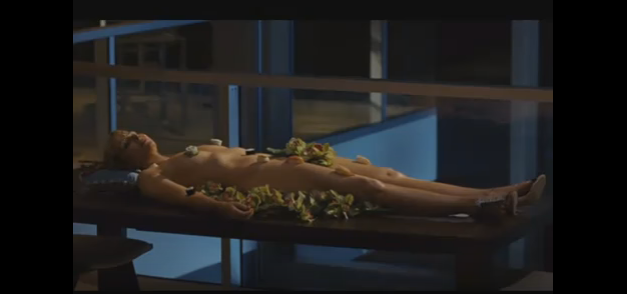
In response to the latter, choreographer Yyvone Rainer wrote in an open letter:
Ms Abramović is so wedded to her original vision that she — and by extension, the Museum director and curators — doesn’t see the egregious associations for the performers, who, though willing, will be exploited nonetheless. Their cheerful voluntarism says something about the pervasive desperation and cynicism of the art world such that young people must become abject table ornaments and clichéd living symbols of mortality in order to assume a novitiate role in the temple of art.
Rainer’s main concerns include the little payment the artists were being paid, the physical exertion, and the close proximity of the artist’s naked bodies with the drunk guests. In sum, the power disparity that the performance brings into relief. The artists were being objectified two-fold: at a gala meant for art world elite, the artists performing for the rich were paid a pittance, and the topper, they’re playing dead, a feast for the eyes and the taboo fantasy of indulging in their flesh. To whose pleasure are female bodies performing as food for?
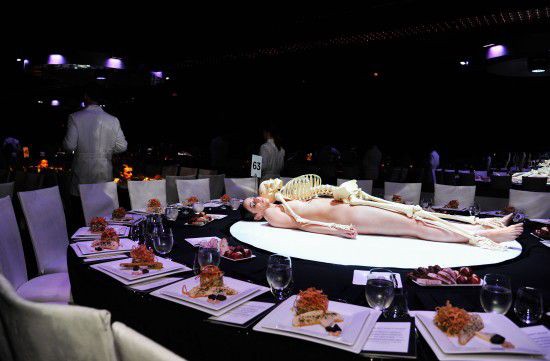
A cake-shaped woman also makes an appearance in Margaret Atwood’s The Edible Woman as a menacing metaphor. “You look delicious,” the main character, Marian says to the cake lady. “Very appetizing. And that’s what will happen to you; that’s what you get for being food.” In a pursuit of her fiancé’s desires (to consume her), Marian bakes him a cake of her likeness and urges him to eat: “You’ve been trying to assimilate me. But I’ve made you a substitute, something you’ll like much better. This is what you really wanted all along, isn’t it? I’ll get you a fork.”
For Perry’s “Bon Appétit,” Abramović’s & Harry’s cake, and Atwood’s protagonist, the voluntary objection and offering of the self in the form of food provides agency via self-awareness. If people are going to consume you, you might as well have a say in it.

Resemblances between women and food have been drawn since the 18th century. On Jean-Baptiste-Siméon Chardin’s paintings, Marcel Proust writes: “You have seen objects and fruits that look as alive as people, and people’s faces, their skin, its fine down or unusual color, that have the look of fruit,” and, “From Chardin we have learned that a pear is as alive as a woman, a plain earthenware vessel as beautiful as a precious stone.” The ability to make both subjects equally come alive can be attributed to Chardin’s mastery, but the desire to treat both subjects similarly can be attributed to prevailing attitudes about women as aesthetically pleasing objects to be literally consumed
The paintings of naked women, still lives, and food, was commented on by painter Chloe Wise in an interview with Vogue:
I think that the comparisons between the female body and food items have a lot of levels. On the level of art history, the female nude is a very, very common theme where you’d see a female reclining, posing elegantly, sometimes without knowledge of the viewer or the male gaze.”
Wise continues:
You see paintings of women the same way that you see paintings of still lifes with bowls of fruits or paintings of family heirlooms or jewels. They’re all kind of representations of things that denote luxury or wealth or abundance. But what I was saying about women’s bodies and food and fruit is that there’s the inherent knowledge that that thing is going to wilt or die.
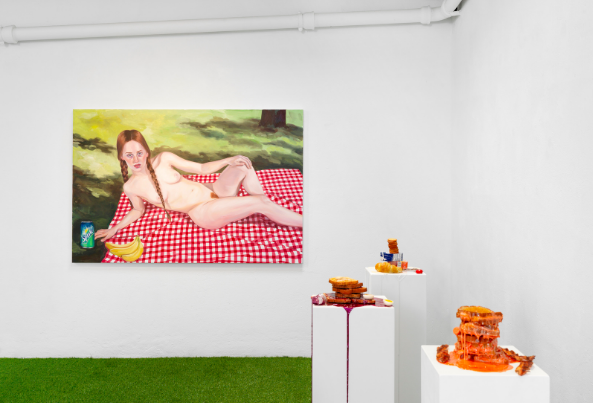
The similarities between the flesh of fruit and skin of humans, and the beauty of each, blurs the boundary of what is edible and what is not, at the same time making clear that both are objects. Both things to be desired and consumed, if only one metaphorically.
Tatum Dooley is a writer living in Toronto.